The Belem Tower stands as an enduring symbol of Portugal’s maritime power and cultural heritage. Built in the early 16th century, this iconic structure played a pivotal role in the country’s exploration and expansion, and its unique architectural features reflect the cultural and artistic influences of the time.
As a UNESCO World Heritage Site, the Belem Tower continues to captivate visitors with its stunning architecture, rich history, and educational programs.
Historical Significance
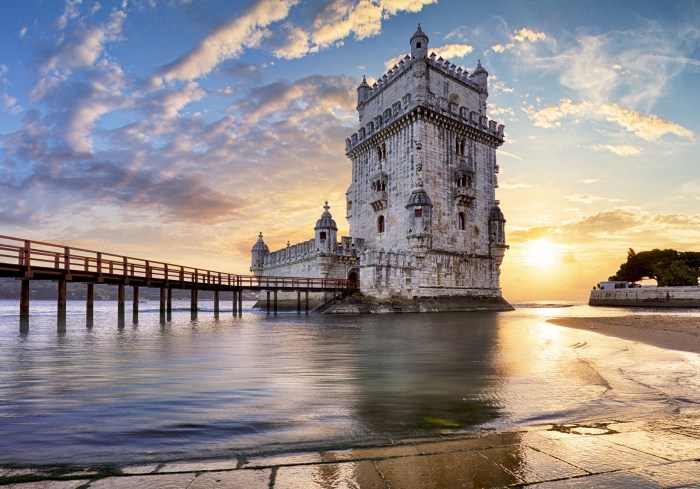
The Belem Tower is a historic monument in Lisbon, Portugal, built between 1514 and 1520. It is a UNESCO World Heritage Site and is considered a masterpiece of Portuguese Manueline architecture. The tower was built during the reign of King Manuel I of Portugal, who commissioned its construction to commemorate Vasco da Gama’s discovery of the sea route to India.
The Belem Tower was designed by the Portuguese architect Francisco de Arruda. It is a five-story tower, with a square base and a polygonal upper section. The tower is decorated with intricate carvings and sculptures, which depict scenes from Portuguese history and mythology. The tower’s design is a blend of Gothic, Renaissance, and Moorish styles.
Role in Maritime Exploration
The Belem Tower played a significant role in Portugal’s maritime exploration and expansion. It was used as a defensive fort to protect the entrance to the Tagus River, which was the main port of Lisbon. The tower also served as a starting point for many Portuguese expeditions, including Vasco da Gama’s voyage to India in 1497. The tower was a symbol of Portugal’s maritime power and wealth, and it became one of the most iconic landmarks in the country.
Architectural Features
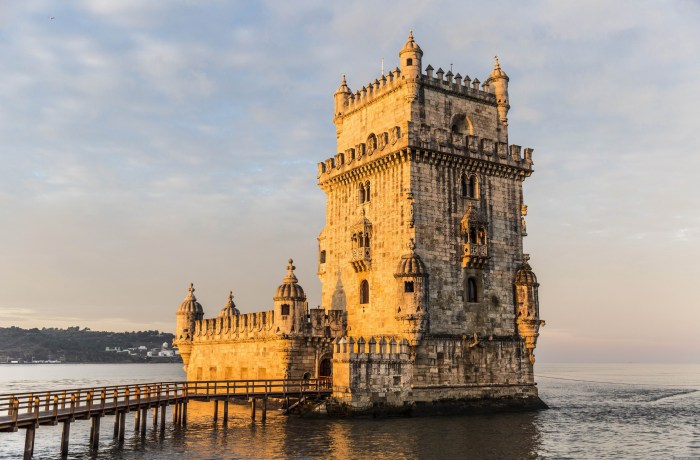
The Belem Tower stands as a magnificent testament to the Manueline style of architecture, a uniquely Portuguese blend of late Gothic and early Renaissance elements. Its distinctive features, from its elaborate ornamentation to its imposing turrets, reflect the cultural and artistic influences of the time.
Manueline Style
The Manueline style emerged during the reign of King Manuel I and was characterized by its intricate and symbolic ornamentation. The Belem Tower is a prime example of this style, with its elaborate carvings depicting nautical motifs, such as anchors, ropes, and sea monsters. These carvings symbolized Portugal’s maritime prowess and the importance of the sea in its history and culture.
Turrets
The Belem Tower features five turrets, each with a unique design and purpose. The main turret, known as the “Torre de São Vicente,” served as a lighthouse, guiding ships into the Tagus River. The other four turrets were used for defensive purposes, housing cannons and providing a vantage point for lookouts.
Belem Tower, an iconic symbol of Lisbon, stands proudly on the banks of the Tagus River. Its intricate Manueline architecture and historical significance make it a must-see destination. After exploring the tower, escape the urban bustle and head to the vibrant barcelona beach.
Stroll along the golden sands, soak up the sun, or indulge in a refreshing swim. Return to Belem Tower, where the panoramic views from its terraces will leave you in awe of Lisbon’s beauty.
Ornamentation
In addition to its nautical motifs, the Belem Tower is adorned with a wealth of other ornamentation. Gargoyles, pinnacles, and statues adorn its walls, reflecting the influence of Gothic architecture. The tower’s overall design is a harmonious blend of these different elements, creating a visually stunning and architecturally significant landmark.
Symbolism and Iconography: Belem Tower
The Belem Tower embodies Portugal’s maritime prowess and cultural heritage, serving as an iconic symbol of the nation’s rich history of exploration and discovery.
Standing as a monument to the Portuguese Age of Discovery, the Belém Tower is a UNESCO World Heritage Site that offers a glimpse into the country’s rich maritime history. Its intricate Manueline architecture and prime location along the Tagus River make it a must-see for history buffs and architecture enthusiasts alike.
While you’re in the area, don’t miss out on exploring the nearby hiking trails that offer stunning views of the surrounding landscape. Discover some of the best hiking trails in the US and immerse yourself in the natural beauty of this vibrant region.
As you make your way back to the Belém Tower, take a moment to appreciate its architectural splendor once more, a testament to Portugal’s rich cultural heritage.
The tower’s design incorporates several decorative elements that hold profound symbolic significance. The armillary sphere, a navigational instrument used by Portuguese explorers, adorns the tower’s facade, representing Portugal’s role as a leading maritime power. The rhinoceros, a symbol of strength and exoticism, is also depicted, reflecting the country’s extensive trade connections with the East.
Architectural Symbolism
The tower’s architectural features themselves convey symbolic meanings. The Manueline style, characterized by its intricate carvings and nautical motifs, reflects the era of Portuguese maritime expansion. The tower’s strategic location at the mouth of the Tagus River symbolized Portugal’s control over the gateway to the Atlantic Ocean.
Cultural Significance
Beyond its architectural symbolism, the Belem Tower holds immense cultural significance. It has been immortalized in literature, art, and music, becoming an enduring symbol of Portuguese identity and national pride. The tower’s presence on the UNESCO World Heritage List further underscores its global recognition as a cultural treasure.
Restoration and Preservation
The Belem Tower has undergone several restoration efforts over the centuries to preserve its historical integrity and architectural significance. These efforts have aimed to address the effects of time, weather, and human activity on the tower’s structure and appearance.
One of the most significant restoration projects was undertaken in the 19th century under the direction of the Portuguese architect José da Costa e Silva. This project involved extensive repairs to the tower’s exterior, including the replacement of damaged stonework and the restoration of the tower’s crenellations.
In the 20th century, the Belem Tower underwent further restoration work, including the consolidation of the tower’s foundations and the repair of cracks in the walls. These efforts were aimed at ensuring the long-term stability and integrity of the tower.
Challenges of Restoration
Restoring the Belem Tower presents several challenges, including:
- The tower’s age and exposure to the elements have caused significant deterioration of the stonework, requiring careful repair and replacement.
- Maintaining the historical integrity of the tower is crucial, which means using materials and techniques that are consistent with the original construction.
- The tower’s location on the banks of the Tagus River exposes it to high levels of humidity and salt spray, which can accelerate the deterioration of the stonework.
Preservation Techniques
To address these challenges, restoration efforts have employed various techniques, such as:
- Using traditional materials and craftsmanship to ensure the authenticity of the repairs.
- Employing non-invasive techniques to minimize damage to the original fabric of the tower.
- Regular monitoring and maintenance to identify and address any potential issues early on.
The ongoing restoration and preservation efforts have ensured that the Belem Tower remains a testament to Portugal’s maritime history and a symbol of the country’s architectural heritage.
Cultural Impact
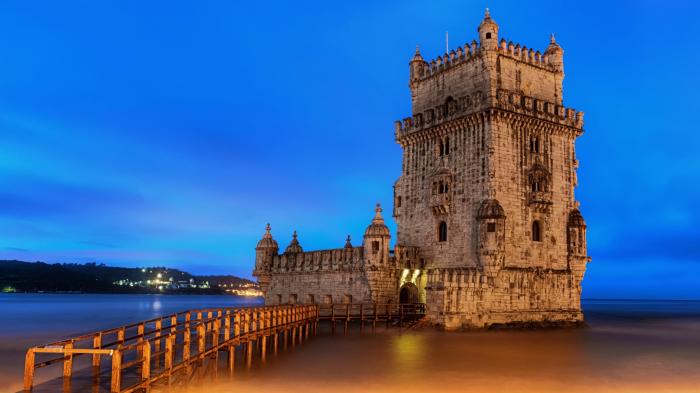
The Belem Tower holds immense cultural significance as a UNESCO World Heritage Site. Its recognition acknowledges its exceptional universal value, reflecting the tower’s historical, architectural, and cultural importance.
The Belém Tower is a historic fortification located in Lisbon, Portugal. It was built in the 16th century to defend the city from attack. The tower is a UNESCO World Heritage Site and is one of the most popular tourist attractions in Lisbon.
If you’re interested in exploring more of Portugal’s rich history and culture, be sure to visit the azores. This archipelago of nine volcanic islands is home to stunning natural beauty, including lush forests, dramatic cliffs, and crystal-clear waters. The Azores are also a great place to go whale watching, dolphin watching, and birdwatching.
After your trip to the Azores, be sure to return to the Belém Tower to learn more about Portugal’s maritime history.
The tower’s designation as a World Heritage Site has enhanced its role as a cultural and educational resource. It serves as a platform for promoting historical knowledge and architectural appreciation, attracting visitors from around the world. The tower’s cultural significance is further emphasized through its inclusion in various cultural events and educational programs.
Tourism, Belem tower
As a popular tourist destination, the Belem Tower attracts millions of visitors annually. Its unique architectural style and historical importance make it a must-visit landmark in Lisbon. The tower offers guided tours and educational materials, providing visitors with insights into its history and significance.
Education
The Belem Tower serves as an educational resource for students and scholars. Its historical significance and architectural features make it an ideal site for learning about Portuguese history, architecture, and maritime exploration. The tower’s inclusion in educational curricula and guided tours enhances its role in fostering cultural appreciation and historical understanding.
Cultural Events
The Belem Tower is a vibrant venue for cultural events, hosting concerts, exhibitions, and festivals. These events attract local and international audiences, showcasing the tower’s versatility and its role as a cultural hub. The events held at the tower contribute to the city’s cultural landscape and enhance its appeal as a destination.
Visitor Experience
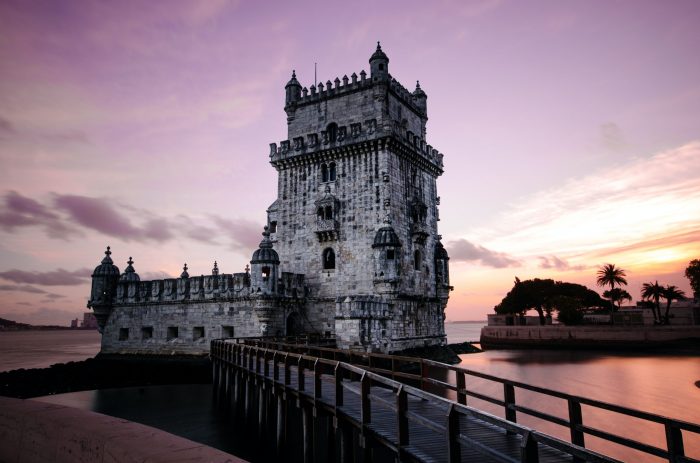
Visiting the Belem Tower is an enriching experience that offers a glimpse into Portugal’s maritime history and architectural heritage. Visitors can explore the tower’s various levels, admire its intricate architecture, and delve into its historical significance through exhibits and guided tours.
The ground floor of the tower houses a small museum that showcases artifacts and documents related to the tower’s history. Visitors can learn about the tower’s role in Portuguese maritime exploration, its defensive significance, and its transformation into a ceremonial and symbolic monument.
Exhibits
The museum exhibits include:
- Model ships and navigation instruments
- Weapons and armor used during the tower’s defensive period
- Documents and maps illustrating the tower’s historical significance
Tours
Guided tours are available for visitors who wish to delve deeper into the tower’s history and architecture. Tours are led by knowledgeable guides who provide insights into the tower’s construction, design, and its role in Portuguese history.
Educational Programs
The Belem Tower also offers educational programs for students and families. These programs include interactive activities, hands-on workshops, and guided tours designed to engage young learners with the tower’s history and cultural significance.
Artistic Representations
The Belem Tower has inspired numerous artistic representations, contributing to its enduring cultural legacy. From literary works to paintings and photographs, these artistic interpretations have captured the essence of the tower and its historical significance.
In literature, the Belem Tower has been featured in works by renowned authors such as Luís de Camões, Portugal’s national poet. In his epic poem “The Lusiads,” Camões describes the tower as a symbol of Portuguese maritime prowess and the nation’s role in the Age of Exploration.
Painting
Painters have also immortalized the Belem Tower on canvas. Notable examples include works by Portuguese artists Domingos António de Sequeira and Alfredo Keil. Sequeira’s painting, “The Embarkation of Vasco da Gama,” depicts the explorer’s departure from the tower on his historic voyage to India. Keil’s painting, “The Belem Tower at Sunset,” captures the tower’s picturesque silhouette against the backdrop of the setting sun.
Photography
In the realm of photography, the Belem Tower has been a popular subject for both historical and artistic purposes. One iconic photograph, taken by French photographer Pierre Verger in 1949, depicts the tower as a solitary sentinel against the vast expanse of the Tagus River. This photograph has become a symbol of Lisbon and has been widely reproduced in postcards and other souvenirs.
Final Review
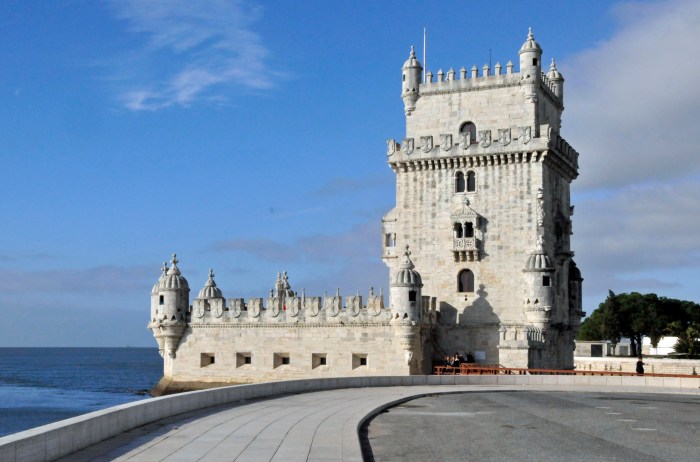
The Belem Tower remains a testament to Portugal’s maritime heritage and cultural achievements. Its architectural beauty, historical significance, and cultural impact make it a must-visit destination for travelers from around the world.
User Queries
When was the Belem Tower built?
The Belem Tower was built between 1514 and 1520.
What is the architectural style of the Belem Tower?
The Belem Tower is an example of the Manueline architectural style, which is a unique Portuguese style that combines elements of Gothic, Renaissance, and Moorish architecture.
What is the significance of the armillary sphere on the Belem Tower?
The armillary sphere is a symbol of Portugal’s maritime exploration and represents the country’s global reach during the Age of Discovery.